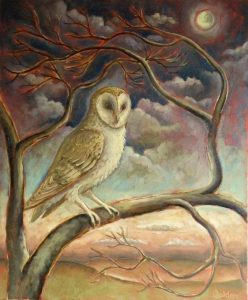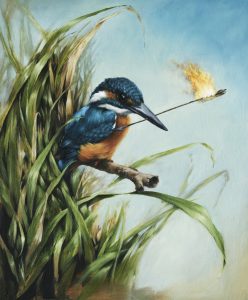 The Yogabliss, Your Heart Life on-line Moving into Meditation classes met this morning. We explored mindful embodiment and listening for the “baseline symphony” of our inter-being: the body’s landscape of ease. In this landscape we can use our “companion calls” to keep track of each other and “to affirm and reaffirm the wellness of the world.” Like the birds, we can call out:
The Yogabliss, Your Heart Life on-line Moving into Meditation classes met this morning. We explored mindful embodiment and listening for the “baseline symphony” of our inter-being: the body’s landscape of ease. In this landscape we can use our “companion calls” to keep track of each other and “to affirm and reaffirm the wellness of the world.” Like the birds, we can call out:
Where are you?
I’m here . . . You there?
I’m here . . . You there?
We oriented by meditation teacher, Tara Brach’s, definition of “radical compassion.” Her book, Radical Compassion, offers many practices for times when we are facing life’s difficulties.
Poet and author, David Whyte, describes “embodiment” in his book, Consolations: The Solace, Nourishment and Underlying Meaning of Everyday Words. David reminds us of the fleeting nature of our embodiment.
We heard poet, Marilyn Peretti’s poem, Still Living. Marilyn reminds us of the enduring nature of our aliveness. We are born of Earth, we return to her and new life emerges.
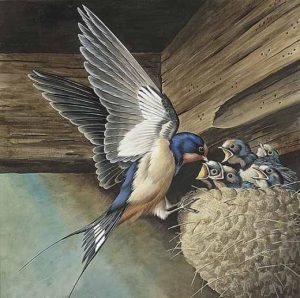 We were inspired by Seattle poet, Lisa Well’s wonderful Orion Magazine essay, The Sounds of Silence. She describes her experience of being intimate with nature. She uses magical terms like “baseline symphony” and “companion calls” to affirm our inter-relatedness. She lives in Seattle and is an editor for The Volta and Letter Machine Editions. She is the author of Believers: Making a Life at the End of the World.
We were inspired by Seattle poet, Lisa Well’s wonderful Orion Magazine essay, The Sounds of Silence. She describes her experience of being intimate with nature. She uses magical terms like “baseline symphony” and “companion calls” to affirm our inter-relatedness. She lives in Seattle and is an editor for The Volta and Letter Machine Editions. She is the author of Believers: Making a Life at the End of the World.
Right now as we step out of the stream of doing we can offer loving kindness and tender caring. We can truly acknowledge our vulnerability and realize how we share it with all beings. Meditation teacher and author Tara Brach calls this:
Radical compassion “. . . means including the vulnerability of this life – all life in our heart. It means having the courage to love ourselves, each other, and our world. Radical compassion is rooted in mindful, embodied presence and it is expressed actively through caring that includes all beings.”
We start where we are: in mindful embodied presence. I invite you to take some deep, nourishing breaths. You can place your hands over your chest. Feel the breath slowly filling you. Then just let it go again. Savor the letting go. Feel the fullness of breath in the fullness of time. Feel your shoulders, arms and hands. Sense the aliveness in these areas. Can you be present in a relaxed wakeful way?
Notice how your shoulders enjoin your upper back. Feel your wings at rest. Right now, you don’t have to carry anything. You are supported by Earth. Feel the center of your chest where ribs meet breastbone. Can you feel how your ribs move with your breath? As you notice any tension, see if you can soften these areas.
Now presence (yes, I’m making it a verb!) with the body. Bring a wakeful and tender awareness to your being. What is your experience of loving presence? Nurturing? Healing? In the open spaciousness of loving presence we can be with what arises in body, heart and mind.
Poet and writer David Whyte writes about embodiment:
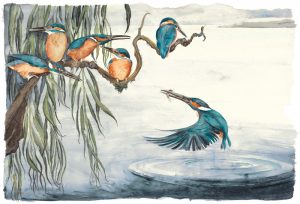 . . . which simply means being here in your body — not anywhere else, just here with life’s fierce need to change you — the fact that the more you’re here and the more you’re alive, the more you realize you’re a mortal human being and that you’ll pass from this place.
. . . which simply means being here in your body — not anywhere else, just here with life’s fierce need to change you — the fact that the more you’re here and the more you’re alive, the more you realize you’re a mortal human being and that you’ll pass from this place.
We will all pass from this place some day. On this day, we can practice “Radical compassion . . . rooted in mindful, embodied presence . . . expressed . . . through caring that includes all.” Right here, right now, we awaken from the trance of our busyness. We can sense the fleeting nature of our being. In the fullness of time, in the fullness of breath we realize our place. Marilyn Peretti’s poem, Still Living, affirms:
I will be alive
when I am dead,
did you know that?
I will not be still
like a hard stone,
but breathing
as roses do,
as robins do,
as the heart
of mountains
which change
and move,
as the mycelium
of mushrooms
under the soil,
unseen, ignored,
sprouting up
at a moment’s notice.
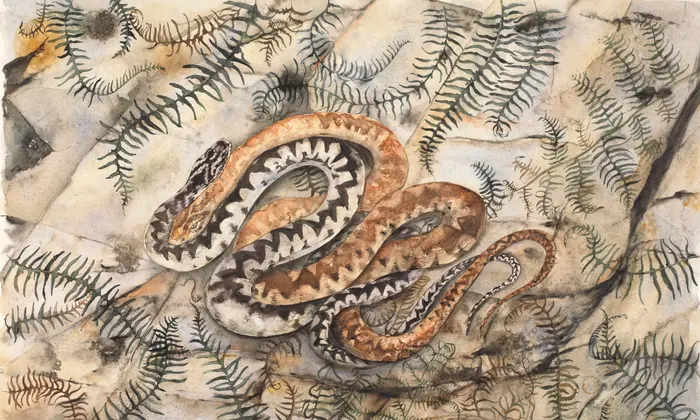 We are Earthlings, born of Her body. In the fullness of time we live. In dying we return – ourselves nourishing life again and again “. . as roses and robins . . . as heart of mountains . . . as magic mycelium sprouting up at a moments notice.”
We are Earthlings, born of Her body. In the fullness of time we live. In dying we return – ourselves nourishing life again and again “. . as roses and robins . . . as heart of mountains . . . as magic mycelium sprouting up at a moments notice.”
I invite you to let go and come back to Earth. Listen and sense your body’s language: sensations and feeling tones; thoughts and emotions. What happens when you give yourself over to Earth support, Earth time? Seattle poet and essayist Lisa Wells recalls the sounds of silence:
When I was a sixteen-year-old naturalist in training, we were instructed to sit in the forest and wait for the return of something called “the baseline symphony.” The baseline symphony was the music of a landscape at ease—the confluence of insect, bird, and animal song, underscored by wind and water.
 What is the music of your body’s landscape at ease? What is it to return to a baseline of well-being? We can appreciate our inter-being with all of nature. We can marvel how our mind and body synchronously work together. Lisa Wells goes on to say:
What is the music of your body’s landscape at ease? What is it to return to a baseline of well-being? We can appreciate our inter-being with all of nature. We can marvel how our mind and body synchronously work together. Lisa Wells goes on to say:
With practice, I learned to still my mind and body long enough for the baseline symphony to return. Insects would take up their strings, their song swelling like groundwater all around me. It was as if my vagus nerve were a dial, tuning me from static to a sublime frequency.
Right now, we can tune into what surfaces in our bodies. You might encounter ease or tension, a sense of relaxation or stress. You could rest your hands lovingly around this area in soothing tender way. You could nurture that tender part by sending a gentle message: “I care deeply about what you need.”
In loving awareness, we can acknowledge our vulnerability, recognize our fear, feel our pain or loss. In our practice of embodied presence we can acknowledge humans and more-than-humans in this tender hearted way. We are offering our caring presence right now.
Lisa writes:
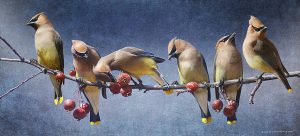 When the baseline symphony returns to a forest, it brings the “companion call,” a short burst of vocalization bounced between birds. Social animals of all kinds use these calls to keep track of their intimates, to affirm and reaffirm the wellness of the world.
When the baseline symphony returns to a forest, it brings the “companion call,” a short burst of vocalization bounced between birds. Social animals of all kinds use these calls to keep track of their intimates, to affirm and reaffirm the wellness of the world.
Where are you?
I’m here . . . You there?
I’m here . . . You there?
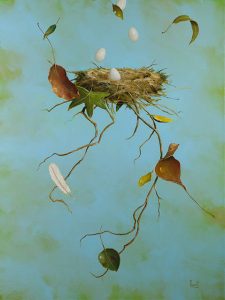 We were born to love. As Lisa says we are social animals using our companion calls to keep track of each other and “to affirm and reaffirm the wellness of the world.” It is only natural that we extend our tender caring to others. We include Earth and all her earthlings in our circle of caring. She is what sustains us as we must sustain each other. We can care deeply about what is needed now and what is needed by future generations.
We were born to love. As Lisa says we are social animals using our companion calls to keep track of each other and “to affirm and reaffirm the wellness of the world.” It is only natural that we extend our tender caring to others. We include Earth and all her earthlings in our circle of caring. She is what sustains us as we must sustain each other. We can care deeply about what is needed now and what is needed by future generations.

